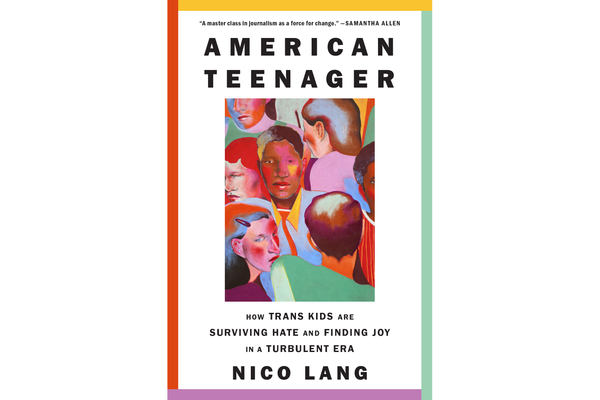A new VIEW on Scouting
How an internal group is fostering community for Scouting's LGBTQ employees and allies.

Logan Ferraro’s experience as an employee of the Boy Scouts of America has been unusual for a few reasons, not least of which is the pandemic. Just days after he was hired, Ferraro was sent home on furlough for three months before the Scout Shop where he worked in Massachusetts could re-open.
But there’s another thing that makes Ferraro’s employment different: He’s part of a new internal employee group called VIEW that aims to promote “an inclusive community for BSA’s LGBTQ+ employees and their allies.”
VIEW, which stands for Visible, Included, Empowered and Welcomed, is the latest of five workforce groups for Scouting employees. The other groups support women, Latinx, Asian and Black employees, respectively.
VIEW functions sort of like a Facebook group, Ferraro said. There’s a message board where anyone can post, ask a question or make a comment. A recent post commemorated Transgender Day of Remembrance in November; another celebrated the coming-out of actor Elliot Page.
Ferraro also told me about a recent conversation around the rainbow square knot patch, an unofficial adornment that was produced by Scouts for Equality and known as the “Inclusive Scouting Award.” A scout had come into Ferraro’s shop looking for the patch, and he posted in the VIEW group to find out where he could get it. Others chimed in, supporting the idea that the BSA sanction the patch, and an employee from the National Service Center said he would take the reigns and try to make it happen. (The BSA did not respond to a request for comment.)
But VIEW has the potential to influence even more impactful changes, Ferraro said. Developing a Scouting-specific LGBTQ training, for example, would help Scouters navigate ever-changing cultural norms and better support youth.
“There’s so much more than [simply] having gay and lesbian scouts within the program,” he said.

This work is personal for Ferraro, who was never able to officially participate in Scouting when he was growing up as the little sister to an Eagle Scout brother, and daughter to a Scouting father.
“My Scouting journey is a bit odd, in part because I’m transgender,” Ferraro said.
Girls were not allowed in the program when Ferraro was growing up, but his father bought him a Scouting handbook and let him check off the requirements anyway. Being accepted alongside the other scouts was Ferraro’s favorite childhood memory. But it didn’t last.
“It was right about sixth grade, when the kids who were my age joined the troop, that it started to get awkward and uncomfortable and I was less welcome in the group,” he said.
He stepped back and figured it would be the end of his unofficial Scouting journey. As a teenager, he transitioned and moved on with his life.
Then he found himself, at the age of 24, bringing his godson to a Cub Scout meeting. He sat in the corner, not intending to really get involved. But the other adult volunteers, knowing Logan was part of a Scouting family, insisted he serve as den leader for his godson.
Ferraro accepted the role, but at first he didn’t come out as trans to the other parents. He preferred that people get to know him before they knew his trans identity.
“I’ve never really had openly negative experiences about it, or have any parents who were uncomfortable with me being with their kids after finding out,” he said.
That fact is especially surprising to Ferraro, because the pack is in his hometown of Wilmington, Mass.
“It was very odd for me to feel so accepted in a town that I haven’t always felt that accepted,” he said.
Now that Ferraro is a Scouting employee, too, he has a view into a program that has evolved in ways he never could have imagined.
“I had wanted my whole life for Scouting to accept girls … It meant so much to me as a kid, and I wanted more than anything to be able to go through that,” he said.
While the timing didn’t work out for him, he’s excited to see his godson, nieces and nephews go through Scouting.
“I'm very shocked and grateful that the program has expanded. I wish it happened 10 or 15 years ago,” he said.
Ferraro is also quick to point out that the work for inclusion is not over. Although girls are now allowed in Scouting, troops are separated along binary gender lines, leaving trans and genderqueer Scouts unsure of where they belong.
“People are coming out younger and younger. It's no longer the 20-year-old Eagle Scout that’s transitioning, it’s the 14-year-old first class scout who’s transitioning,” Ferraro said.
The VIEW group also serves as a place to figure out what to do in those situations. Ferraro said a lot of people bring up such challenges, and VIEW allows them to discuss it in a way that is less heated than public Facebook groups, for example.
“I think VIEW has a great ability to bring in all these experiences and conversations from across the country, of LGBTQ people who have been in Scouting and know the program … and how we can influence it and make it better,” Ferraro said.



